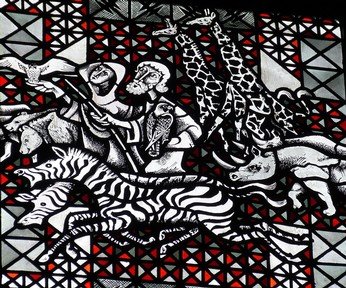Quiz Answer Key and Fun Facts
1. Psalm 51:7 (KJV) mentions being 'purged' with this plant and becoming clean. Which shrub, which belongs to the mint family and is used in herbal medicine, is this?
2. The riddle 'out of the eater came something to eat, and out of the strong came something sweet' refers to a lion with a swarm of bees making honey inside it. Which Biblical judge, known for his feats of strength, proposed the riddle to the Philistines?
3. To which kind of seed, pictured here, did Jesus compare the Kingdom of Heaven in Matthew 13:31-32 (KJV)?
4. Donkeys appear in the Bible several times, including the donkey that Jesus rode into Bethlehem on Palm Sunday. In Numbers 22, the prophet Balaam is riding his donkey when the donkey refuses to move. What had the donkey seen?
5. Pictured here is an Easter lily. According to Jesus in the Sermon on the Mount, in Matthew 6:28 and Luke 12:27, the lilies of the field 'do not toil'. What else do they not do (KJV)?
6. These furry little mammals pictured here are rock hyraxes. True or false: rock hyraxes are mentioned in the Christian Standard translation of the Bible.
7. In Luke 11:42 (KJV), Jesus accuses the Pharisees of tithing mint and another herb, pictured here, while "passing by justice and the love of G-d". What is the herb in question?
8. In the Books of Kings, which evil queen is thrown out of a window and eaten by dogs?
9. In which book of the Old Testament do the Israelites complain about only having manna to eat, and recall eating cucumbers, garlic and leeks (pictured here) with their fish?
10. In the Book of Revelation, which of the four Horsemen of the Apocalypse rides a black horse?
Source: Author
Kankurette
This quiz was reviewed by FunTrivia editor
looney_tunes before going online.
Any errors found in FunTrivia content are routinely corrected through our feedback system.

